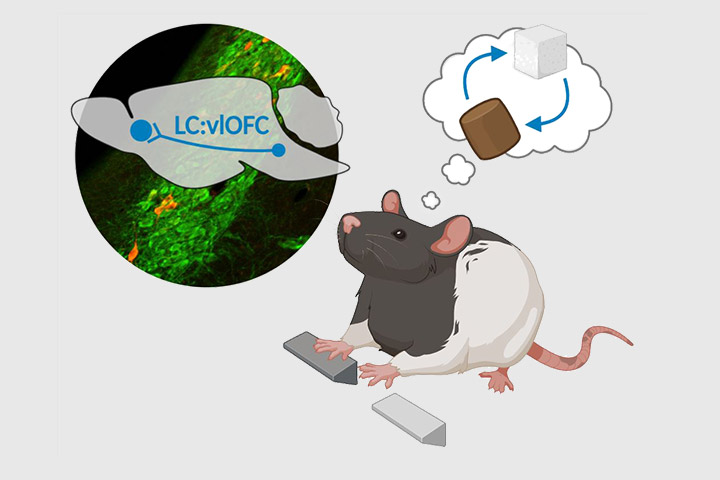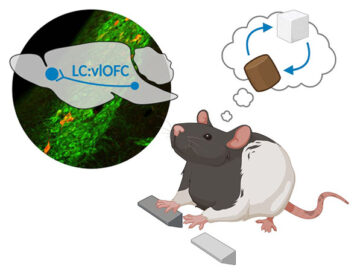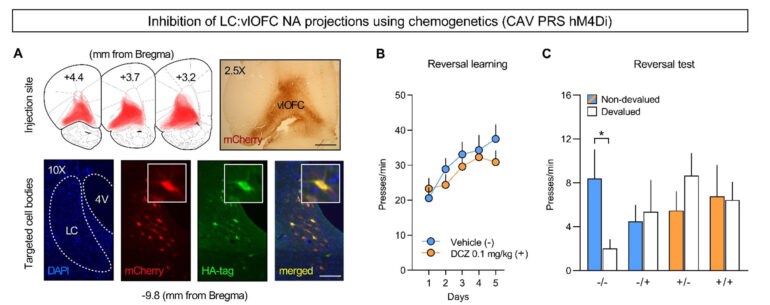
Juan-Carlos Cerpa, Alessandro Piccin et al. in eLife
 Updating goal-directed actions requires noradrenergic signaling in the ventrolateral orbitofrontal cortex
Updating goal-directed actions requires noradrenergic signaling in the ventrolateral orbitofrontal cortex
In a constantly changing environment, organisms must track the current relationship between actions (A) and their specific outcomes (O), and use this information to guide decision-making. Such goal-directed behaviour relies on circuits involving cortical and subcortical structures.
Notably, a functional heterogeneity exists within the medial prefrontal, insular, and orbitofrontal cortices (OFC) in rodents. The role of the latter in goal-directed behaviour has been debated, but recent data indicate that the ventral and lateral subregions of the OFC (vlOFC) are needed to integrate changes in A-O relationships.
Neuromodulatory agents are also crucial components of prefrontal functioning and behavioural flexibility has been suggested to rely upon the noradrenergic (NA) modulation of the prefrontal cortex. Therefore, we assessed whether NA innervation of the vlOFC plays a role in updating A-O relationships in rats.
After learning initial A-O associations, the animals were required to flexibly encode and use new associations during an instrumental reversal task. First, we depleted NA fibres using anti-DβH saporin and observed a profound deficit in the ability to use the reversed A-O associations to guide choice. This deficit was not present when we depleted dopaminergic innervation using a combination of 6-OHDA and desipramine.
Then, we investigated the temporal and anatomical specificity of our effect using viral vector-mediated expression of inhibitory DREADDs. We found that silencing NA projections from the locus coeruleus (LC) to the vlOFC, but not to the medial prefrontal cortex, impaired the rats’ ability to acquire and express the reversed instrumental contingencies.
Collectively, our data suggest that NA projections to the vlOFC are likely required for both encoding and recalling the identity of an expected instrumental outcome, specifically when that identity has changed.

Reference
Juan Carlos Cerpa*, Alessandro Piccin*, Margot Dehove, Marina Lavigne, Eric J. Kremer, Mathieu Wolff, Shauna L. Parkes+, Etienne Coutureau+. (2023)
Inhibition of noradrenergic signalling in rodent orbitofrontal cortex impairs the updating of goal-directed actions.
eLife 12:e81623.
https://doi.org/10.7554/eLife.81623
* Authors contributed equally to the work
+ corresponding authors
The authors
Team “Decision and Adaptation” (Team leader: Mathieu Wolff), INCIA
https://www.bordeaux-neurocampus.fr/en/team/decision-and-adaptation/
Univ. Bordeaux, CNRS, INCIA, UMR 5287, F-33000 Bordeaux, France
Last update 17/05/23




